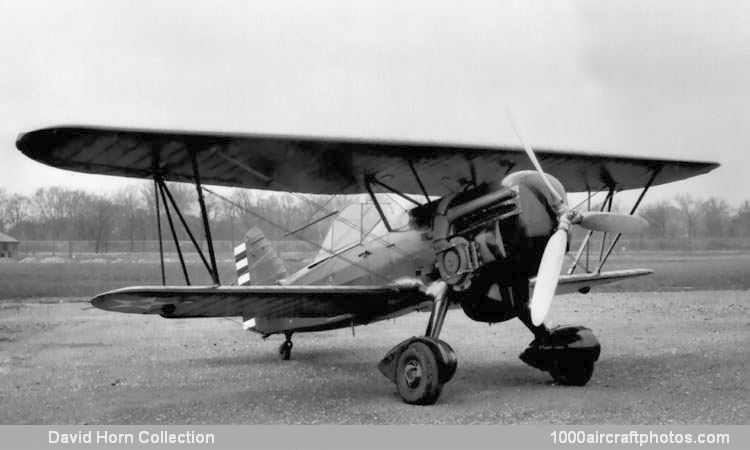11/30/2009. Remarks by Johan Visschedijk: "The Hawk airframe was slated to take the experimental 600 hp Curtiss H-1640-1 Chieftain twelve-cylinder two-row air-cooled radial engine and was designated XP-11. Before the installation could be accomplished, flight tests of the engine in the Thomas-Morse XP-13 turned up severe over-heating problems. The development of the engine was abandoned and, with it the XP-11 and the more advanced Curtiss XP-14.
Two of the three incomplete P-11 airframes (s/n 29-367, 29-368) were completed as P-6s, while the third (s/n 29-374) was completed as the YP-20, fitted with a 575 hp Wright R-1820 Cyclone nine-cylinder air-cooled radial. It was originally intended that, upon completion of trials with the Cyclone engine, airframe 29-374 would become part of the XP-22 program with a 600 hp Curtiss V-1570-23 Conqueror twelve-cylinder liquid-cooled V-engine installed.
Instead, the tests with the Cyclone engine continued and another Hawk airframe (s/n 29-262) was allotted to the XP-22 program. The XP-22 was fitted with a low drag spatted single-strutted landing gear, and it was in this test bed that the definitive Prestone radiator was finally evolved after five years of trial and error with earlier Hawks.
When the XP-22 tests were completed, the Conqueror engine, NACA cowling and landing gear were fitted to the YP-20 to become the prototype P-6E, and it was also the first Hawk to use a steerable tail wheel and utilize an increased vertical fin area. Subsequently an order for 46 YP-22s was canceled and 46 P-6Es were ordered instead.
Next the XP-6E was equipped with the 675 hp turbocharged V-1570-55, enclosed canopies and modified wheel spats, and in this configuration, it became the XP-6F."
